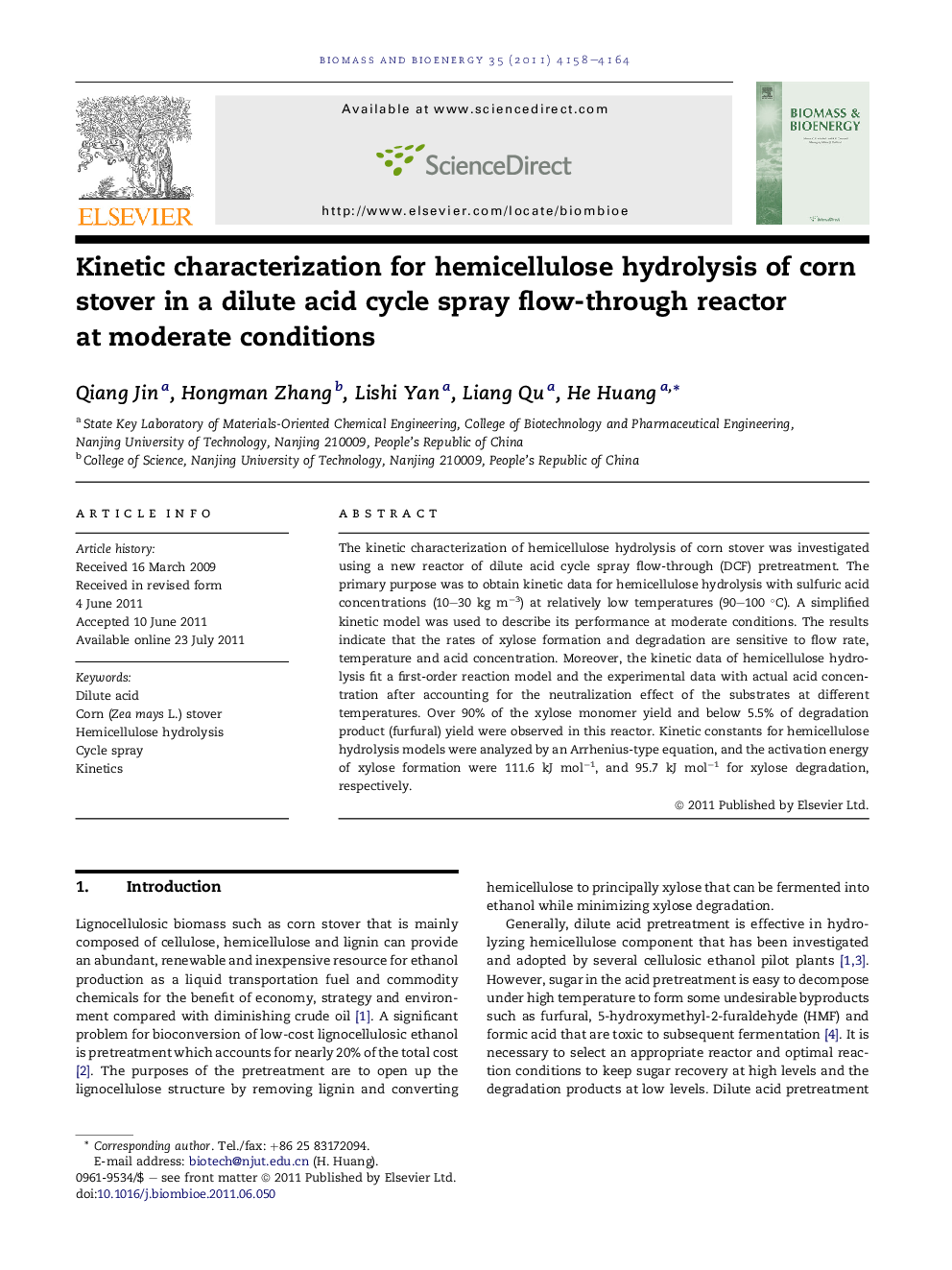| Article ID | Journal | Published Year | Pages | File Type |
|---|---|---|---|---|
| 677960 | Biomass and Bioenergy | 2011 | 7 Pages |
The kinetic characterization of hemicellulose hydrolysis of corn stover was investigated using a new reactor of dilute acid cycle spray flow-through (DCF) pretreatment. The primary purpose was to obtain kinetic data for hemicellulose hydrolysis with sulfuric acid concentrations (10–30 kg m−3) at relatively low temperatures (90–100 °C). A simplified kinetic model was used to describe its performance at moderate conditions. The results indicate that the rates of xylose formation and degradation are sensitive to flow rate, temperature and acid concentration. Moreover, the kinetic data of hemicellulose hydrolysis fit a first-order reaction model and the experimental data with actual acid concentration after accounting for the neutralization effect of the substrates at different temperatures. Over 90% of the xylose monomer yield and below 5.5% of degradation product (furfural) yield were observed in this reactor. Kinetic constants for hemicellulose hydrolysis models were analyzed by an Arrhenius-type equation, and the activation energy of xylose formation were 111.6 kJ mol−1, and 95.7 kJ mol−1 for xylose degradation, respectively.
► Investigating a novel pretreatment reactor of dilute acid cycle spray flow-through. ► Xylose yield is sensitive to flow rate, temperature and acid concentration. ► Obtaining relatively higher xylose monomer yield and lower fermentation inhibitor. ► Lumping hemicellulose and xylan oligmers together in the model is a valid way. ► The kinetic model as a guide for reactor design, and operation strategy optimization.
